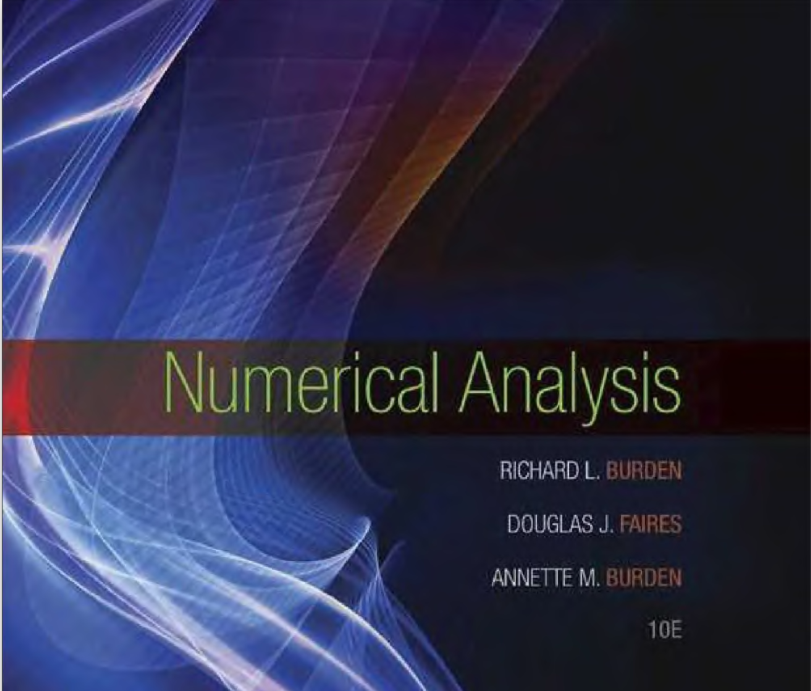Module-I
Solutions of Equations in One Variable
Introduction
2.1: The Bisection Method.
2.2: Fixed-Point Iteration.
2.3: Newton’s Method and Its Extensions- Newton’s Method (Newton-Raphson method), Convergence using Newton’s Method, The Secant Method, The Method of False Position.
2.4: Error Analysis for Iterative Methods- Order of Convergence, linear and quadratic convergence, Multiple Roots, Modified Newton’s method for faster convergence.
Interpolation and Polynomial Approximation
Introduction
3.1: Interpolation and the Lagrange Polynomial- motivation , Lagrange Interpolating Polynomials, error bound
3.2 : Data Approximation and Neville’s Method- motivation , Neville’s Method, recursive method to generate Lagrange polynomial approximations .
3.3: Divided Differences - k th divided difference, Newton’s divided difference formula, Forward Differences, Newton Forward-Difference Formula, Backward Differences, Newton Backward–Difference Formula, Centered Differences, Stirling’s formula.
Module-II
Numerical Differentiation and Integration
Introduction
4.1: Numerical Differentiation- approximation of first derivative by forward difference formula, backward difference formula, Three-Point Formulas, Three-Point Endpoint Formula, Three-Point Midpoint Formula [ Five-Point Formulas,
Five-Point Endpoint Formula, Five-Point Midpoint Formula omitted] Second Derivative Midpoint Formula to approximate second derivative, Round-Off Error Instability
4.3:Elements of Numerical Integration- numerical quadrature, The Trapezoidal Rule, Simpson’s Rule, Measuring Precision, Closed Newton-Cotes Formulas, Simpson’s Three-Eighths rule, Open Newton-Cotes Formulas
4.4: Composite Numerical Integration-composite Simpson’s rule, composite trapezoidal rule, composite midpoint rule, round off error stability
4.7:Gaussian Quadrature-motivation, Quadrature on Arbitrary Intervals
[Algorithms are omitted] Legendre Polynomial, Gaussian
Module-III
Initial-Value Problems for Ordinary Differential Equations
Introduction
5.1 The Elementary Theory of Initial-Value Problems
5.2: Euler’s Method- derivation using Taylor formula, Error bounds for Euler Method
5.3: Higher-Order Taylor Methods- local truncation error , Taylor method of order n and order of local truncation error
5.4: Runge-Kutta Methods- only Mid Point Method, Modified Euler’s Method and Runge-Kutta Method of Order Four are required. [derivation of formula omitted in each case]
5.6: Multistep Methods- basic idea, definition , Adams-Bashforth Two-Step Explicit Method, Adams-Bashforth Three-Step Explicit Method, Adams- Bashforth Four-Step Explicit Method, Adams-Moulton Two-Step Implicit Method, Adams-Moulton Three-Step Implicit Method, Adams-Moulton 38Four-Step Implicit Method, Predictor-Corrector Methods.

- Teacher: THOMAS MATHEW
- VECTOR ALGEBRA
- VECTOR DIFFERENTIATION
- VECTOR INTEGRATION
- DIVERGENCE THEOREM
- GREENS THEOREM
- STOKES THEOREM
- Teacher: THOMAS MATHEW
Fifth Semester B.Sc Mathematics Students
- Teacher: Divya T K
Fifth Semester B.Sc Mathematics Students
- Teacher: Divya T K
